Additional sites of historic significance
There are many more places of historic significance in and around Woombye’s current town centre.
Have a look at some additional places and their information below.
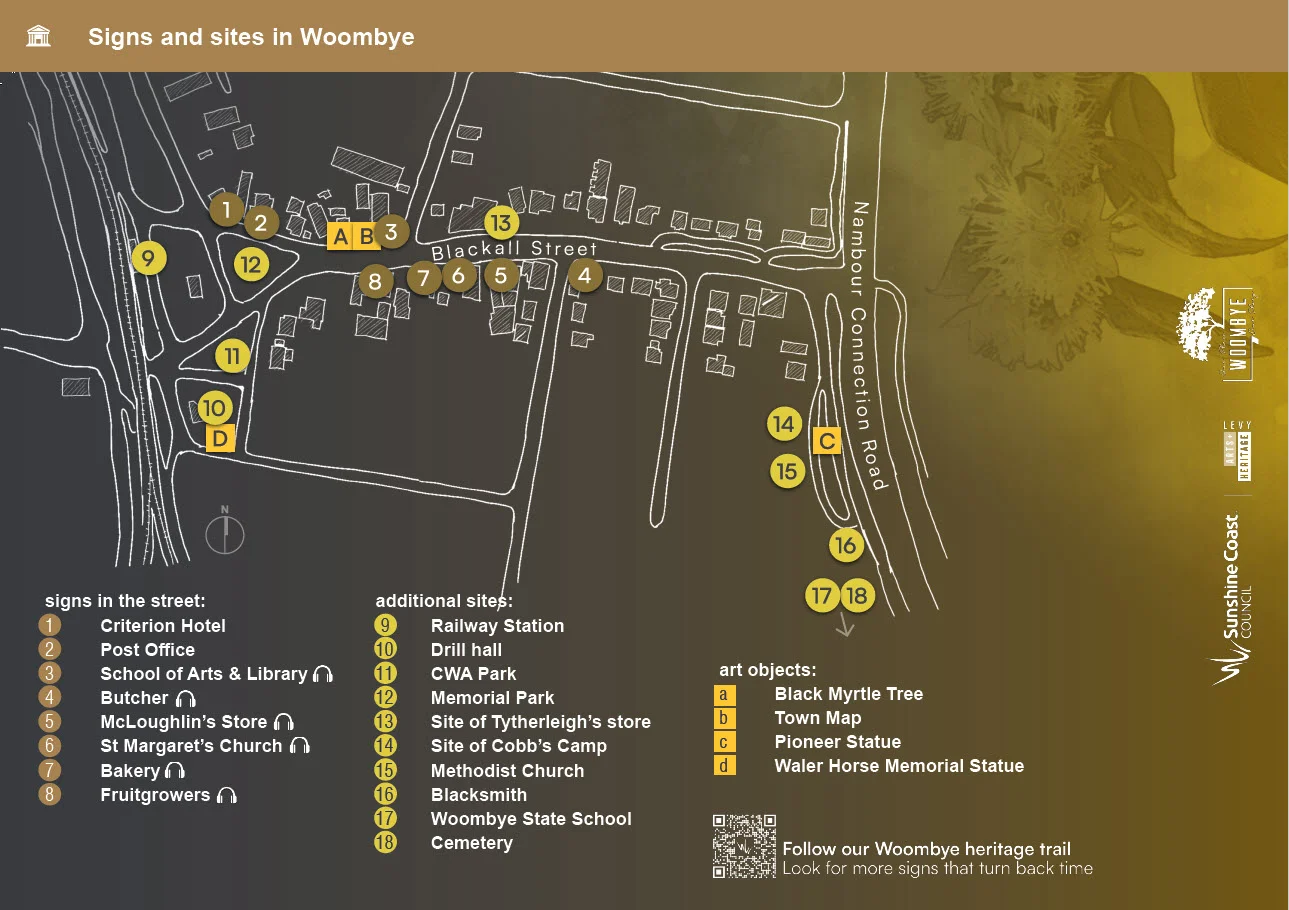
09 Railway Station
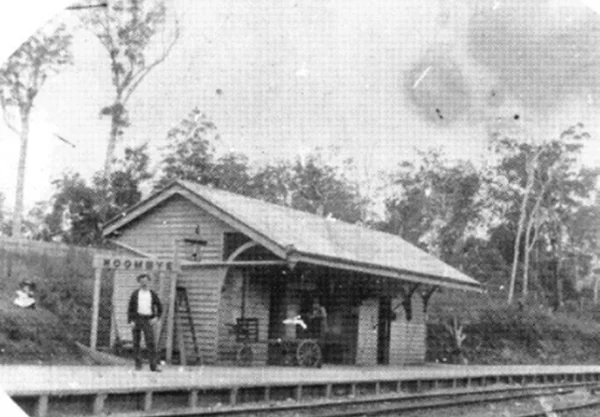
In 1890 the railway line from Landsborough through Woombye to Yandina was completed. The railway station was important for the little town and people used the new transport to travel to destinations miles away, which only a few years earlier had taken days.
From the 1940s, the Woombye Railway Station was a hub of activity. The entire district was planted up with pineapples. Thousands of tons of fruit left the station and farmers said you could smell pineapples even before you nearing the station.
Picture Sunshine Coast. Sunshine Coast Council.
10 Drill Hall
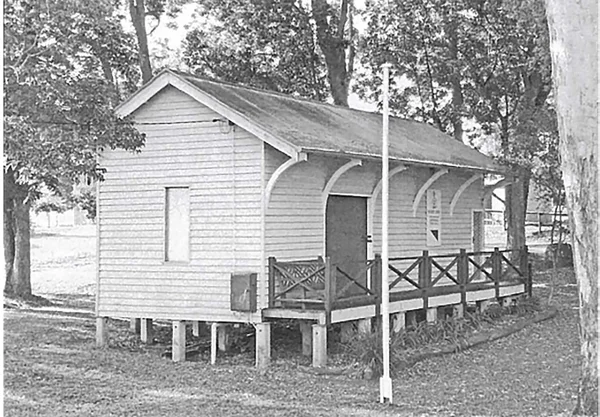
The 2nd Light Horse Regiment Woombye Troop was formed in 1921. The original Drill Hall was an old wooden house on Diddillibah Road. The current Memorial Drill Hall was a railway goods shed, beside the Woombye station, which was moved to the lower end of the Country Women’s Association (CWA) Park. The Light Horse Memorial Troop needed a place to meet and took over the building in 1996. It is named after Major Moorhouse for his many years of service – Hugh Moorhouse Memorial Drill Hall.
Picture Sunshine Coast. Sunshine Coast Council.
11 CWA Park
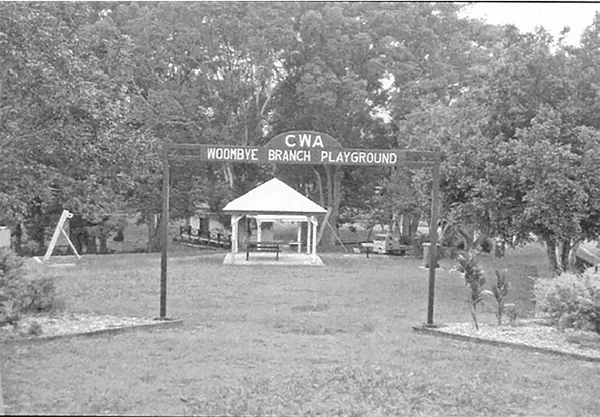
The Woombye branch of the Queensland Country Women’s Association (CWA) was formed in 1929. The focus was on helping women and children, particularly in remote areas.
In 1929 they provided a Christmas tree for children and every child received a gift. During the war, the CWA members knitted countless socks, pullovers, scarves and balaclavas.
The Woombye branch closed but left the legacy of the playground in Park Street.
Picture Sunshine Coast. Sunshine Coast Council.
12 Memorial Park
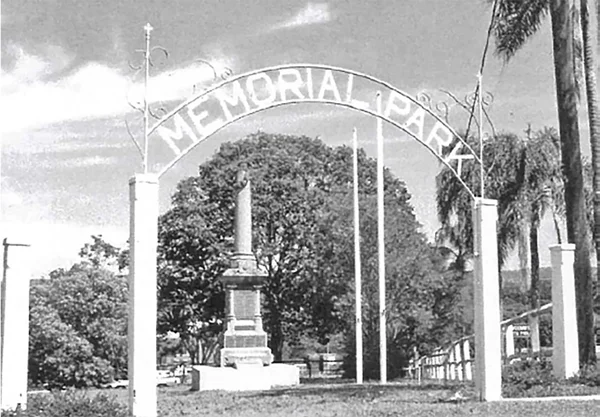
The Woombye War Memorial commemorates Australian servicemen and women who have served in all wars and conflicts. The Memorial was dedicated on 5 July 1925 and memorial gates were erected in mid-1926. Anzac services have been held in Memorial Park ever since – Lest we forget.
Picture Sunshine Coast. Sunshine Coast Council.
13 Site of Tytherleigh Store

John Tytherleigh was born in London in 1867 and came to Australia with 30 shillings in his pocket. He worked for his aunt and uncle in Brisbane before erecting a store on the corner of Blackall and Hill streets in Woombye. John Tytherleigh also owned other Universal Providers stores situated at Landsborough, Caloundra and Maleny. He sold everything from fancy goods to fencing wires, menswear and household goods.
Tytherleigh stores were one of the oldest established firms on the Sunshine Coast. The Woombye shop closed and the building was demolished in the 1960s.
Picture Sunshine Coast. Sunshine Coast Council.
14 Site of Cobb's Camp

Following the discovery of gold at Gympie in 1867, the Government built a road connecting Brisbane to Gympie. It was completed in October 1868 and by November, horse drawn coaches were carrying passengers, mail, goods and gold. Ten staging depots were established along the route, and one of these depots was 'Middle Camp', halfway between Brisbane and Gympie. Middle Camp was later known as Cobb’s Camp and is today called Woombye.
Here, on the 1st June 1869, James Costar was granted a 20-acre homestead selection and erected accommodation for travellers traversing the Gympie Road. Woombye’s first Pub was called Nil Desperandum, and is Latin for “nothing to despair” and was later anglicised to become Australia’s expression of easy going optimism regardless of the circumstances “no worries”.
Nil Desperandum homestead and stables were located at what is now 22 Pine Grove Road, Woombye (LotPlan 12SP183209) and was East of and adjoined that of Cobb’s Camp Hotel, established in 1871 by Cobb & Co, on what is now 12 Pine Grove Road, Woombye (LotPlan 13RP132419).
James Costar, hotel keeper at Cobb’s Camp, on the Gympie Road, was summoned to appear before the Police Magistrate on the 13th June 1870 for the offence of sly-grogging, the selling of Fermented and Spirituous Liquors without a licence.
On the 17th May 1870 and in advance of his court appearance he wrote:
To the Worshipful the Justices of the Peace acting in and for the District of Brisbane, in Queensland.
I, JAMES COSTAR, now residing at Cobb’s Camp, in the District of Brisbane, do hereby give notice that it is my intention to apply, at the next Licensing Meeting or Special Petty Sessions, to be holden for this District on the 14th day of June next ensuing, for a PUBLICAN’S LICENSE for the sale of Fermented and Spirituous Liquors, in the house and appurtenances thereunto belonging, situated at Cobb’s Camp, containing six bed-rooms and two sitting-rooms, exclusive of those required by my family. The house is my own property, and is present occupied by me, and which I intend to keep as an Inn or Public-house, under the Sign of Nil Desperandum. I am a widower. I have never held a license before in this colony.
Given under my hand this 17th day of May, one thousand eight hundred and seventy.
The charge of sly-grogging was withdrawn on receipt of the application.
One year later, on the 9th May 1871, a Publicans Licence was granted to James Costar for the Nil Desperandum. On the following day, James Costar was declared insolvent and the land and premises was returned to the crown. James Costar died on 14th April 1885 at the Brisbane Hospital, late of Dalby. Woombye’s own Nil Desperandum Rum is named in honor of James’s endeavours.
Survey of Cobb’s Camp dated 1870 and comparative map of Woombye courtesy of Matt Hobson.
Picture Sunshine Coast. Sunshine Coast Council.
15 Methodist Church

The first Wesleyan (Methodist) church was built below the intersection on Blackall Street, the then Bruce Highway in 1900. The building soon became too small, so a new church was built on the site of Cobb’s Camp stables in 1912. The stumps for the building were cut and carted to the site by voluntary labour. The Woombye Methodist Church served the larger church and the community well.
Picture Sunshine Coast. Sunshine Coast Council.
16 Blacksmith

In a farming community that was developing and where horses were used to pull carts, wagons and farm implements, there was a great need for a ‘smithy’ in the town.
The first one was Thomas McClintock, who established his shop as a blacksmith and wheelwright in the old police stables. Over time several other blacksmiths had their shops in Woombye at various locations, for example one was located at the highlighted location, 300 yards south of the Methodist church.
Picture Sunshine Coast. Sunshine Coast Council.
17 Woombye State School

The first teacher Mulville and pupils occupied the school building in 1886. Under the first head teacher John Hamley, between 1898 and 1927, experimental agricultural plots were introduced teaching students the fundaments of crop production. These experiments were believed to be the first of their kind in Queensland and played an important role in the development of the pineapple, banana and citrus industries. The students involved in conducting them became prominent fruit growers, a great asset to Woombye in the following year.
Picture Sunshine Coast. Sunshine Coast Council.
18 Cemetery

In 1887, 29 Woombye residents selected an area of land and petitioned the Minister of Lands to reserve it for a cemetery. The land was surveyed in 1888 and a year later the proclamation for a cemetery was made.
The avenue of trees and the little shed determinedly built by the people remains – it is a pleasant, quiet place.
Picture Sunshine Coast. Sunshine Coast Council.